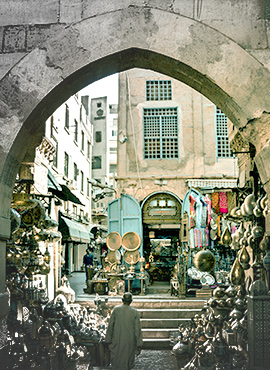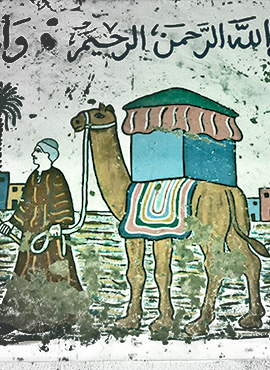Since 3725 BCE, Egyptians began shaping pottery in the city of Naqada using "Nile" silt through several stages: drying, grinding, kneading, shaping, drying in the shade, and then firing. The craft evolved; pottery was decorated with drawings, used for seals and statues, and exported to the ancient world. With the arrival of the Greeks and Romans, it became lighter. In the "Coptic Era," it was adorned with Christian motifs. The industry continued after the Arab conquest in Fustat to this day. Among the most important modern pottery centers are the villages of "Tunis," "Al-Nazla," and "Fanoos" in Faiyum.


